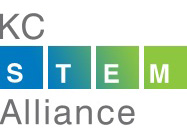03 Feb Olathe students’ science diversity work wins top prize

The problem is that her sixth-grade math and science students are being told that science, technology, engineering and math (STEM) fields are for only a certain kind of person — that one must look a certain way to study robotics. For example, Hillman recalled showing a video in class of scientists in a lab setting and, in the discussion that followed Omar Kassim — a student whose folks hail from Jordan, one of the 20 nationalities represented at Santa Fe Trail Middle School — stayed mum when Hillman directed the discussion to him.
It wasn’t a question of Kassim’s ability to do the work. Hillman detected something deeper going between the STEM and diversity — something the instructor decided to explore with her First LEGO League robotics team.
On Jan. 17, the team participated in the Greater Kansas City FIRST LEGO League Championship at Union Station. The contest included a research component, which the team fulfilled through a study of STEM knowledge and its relationship to diversity. The team discovered that non-white sixth- and seventh-grade students generally score significantly worse on science literacy than their white peers.
While students and their LEGO robots dueled in obstacle courses, participants walked among a science fair-type area where the participating schools displayed their research. Santa Fe Trail Middle School’s findings appeared alongside other research conducted in anticipation of the robotics competition.
Among other measures of science literacy, including naming STEM careers and Olathe Unified School District 233’s 21st Century Program, a STEM-readiness high school curriculum, students polled were asked what STEM means. In that basic metric, 60 percent of white sixth-graders polled could properly explain the concept, compared to 40 percent of their non-white peers. In seventh grade, none of the non-white students polled could define STEM.
The team then took the students polled through a set of activities to explain and demonstrate the concept through them. For example, participants took mass and fluid measurements of a block of Ivory soap in both solid and liquid forms against predictions of which would be greater (the “M” in STEM). For the “T” portion, a 3D printer was demonstrated for participants.
“I didn’t even know what a 3D printer was,” said Zoe Sanchez, a Santa Fe Trail sixth-grader.
Over the course of their discussion, Sanchez and her research partner, Fabiola “Fabby” Hernandez-Bucio, a Santa Fe Trail Middle School sixth-grader, said the cast of working professionals in the science world began to profile a lot like the working professionals on the TV show “Mad Men.”
“They were men usually — mostly white,” Sanchez said.
Hillman recalled seeing the look of shock on her students’ faces when they saw that only 2 percent of the science workforce consists of minorities and women.
“Honestly, I think it put the girls in alarm,” the instructor said.
Hillman said she’s relayed the results to the Santa Fe Trail Middle School leadership.
Although Hillman’s students performed better at prior robotics competitions, they took first place in the research portion of the contest.
When asked during the contest about his career ambitions, Kassim said he’s still mum about being an engineer or anything similar. Instead, the sixth-grader expressed a strong interest in being a football player.
But if that doesn’t work out, Kassim would love to be “a science-type guy,” he said.
Story By Jesus Lopez-Gomez, Dos Mundos



